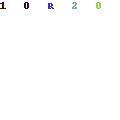By October, the markets had settled into a definable downtrend, at least according to my indicators. We sat safely on the sidelines and watched the unfolding of what is now considered to be one of the worst bear markets in history. By April 2001 the markets really had taken a dive, but Wall Street analysts, brokers and the financial press continued to harp on the great buying opportunity this presented.
Buying on dips, dollar cost averaging and "V" type recovery were continuously hyped to the unsuspecting public.
By the end of the year, and after the tragic events of 911, the markets were even lower and people began to wake up to the fact that the investing rules of the '90s were no longer applicable.
Stories of investors having lost in excess of 50% of their portfolio value were the norm. Why bring this up now? To illustrate the point that I have continuously propounded throughout the 90s; that a methodical, objective approach with clearly defined Buy and Sell signals is a "must" for any investor. To say it more bluntly: If you buy an investment and you don't have a clear strategy for taking profits if it goes your way, or taking a small loss if it goes against you, you are not investing; you are merely gambling.
The last 2-1/2 years clearly illustrate that it is as important to be out of the market during bad times, as it is to be in the market during good times. Want proof? According to InvesTech's monthly newsletter it turns out that, measuring from 1928 to 2002, if you started with $10 and you followed the famous buy-and-hold strategy, that $10 would become $10,957.
If you somehow missed the best 30 months, your $10 would only be $154. However, if you managed to miss the 30 worst months, your $10 would be $1,317,803! Thus, my point: Missing the worst periods has profound impact on long-run compounding.There are times when you end up better off by being out of the market. Interestingly enough, if you missed the 30 best months and the 30 worst months, your $10 would still be worth $18,558, which is 80% higher than the buy-and-hold strategy. This all comes about because stock prices generally go down faster than they come back up.
You can generate Worldwide Income From Home.




No comments:
Post a Comment